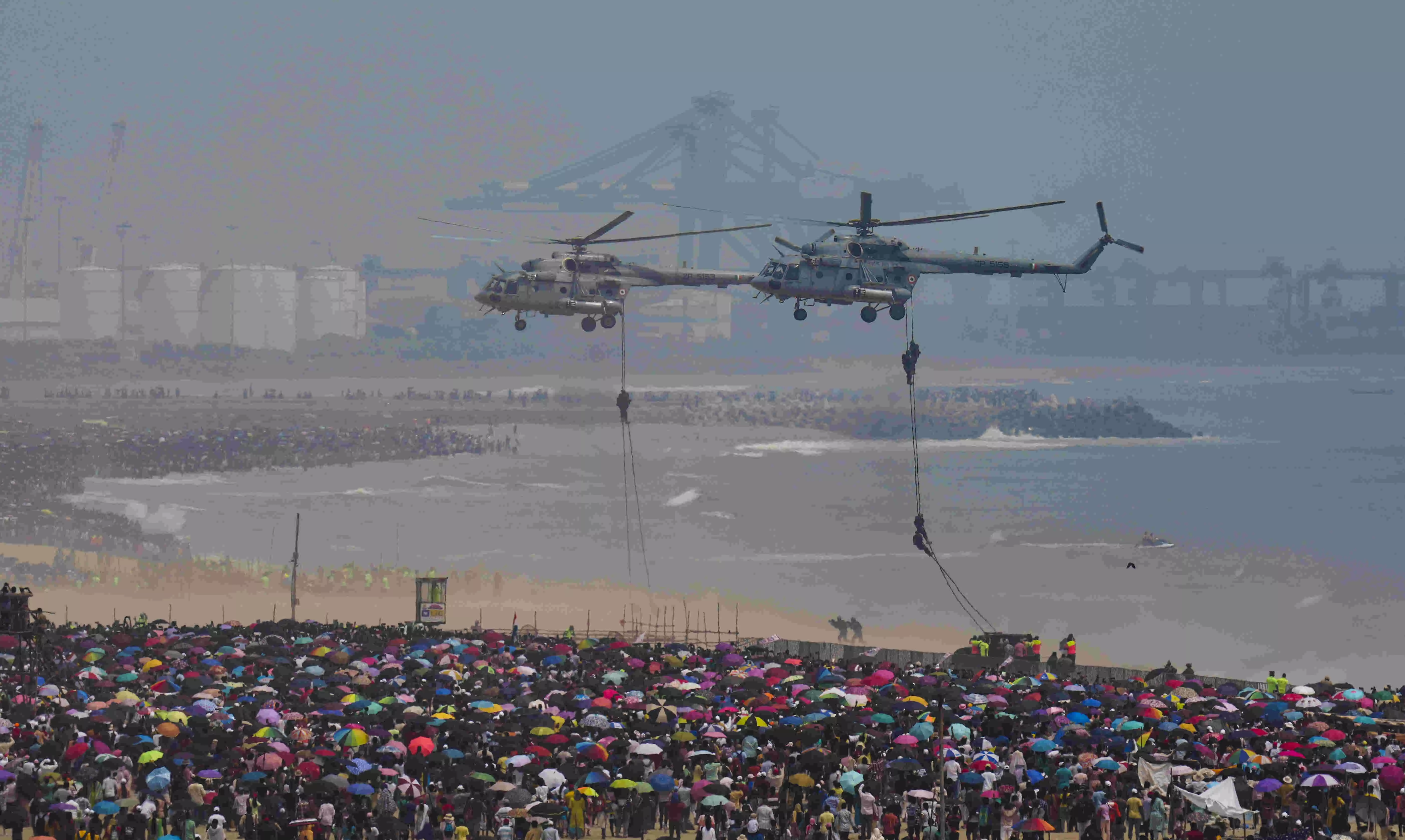A tragic spectacle

The Marina Beach fiasco cannot be passed off as an accidental tragedy. It has left, like in several other cases in the past, many unanswered questions on accountability. What was supposed to be a magnificent display of national pride and military prowess turned into a tragic day for many in Chennai. On October 6, more than 12 lakh people—including children and elderly, men and women—gathered at Marina Beach to celebrate the grand air show. The joyous euphoria turned into a grim manifestation by the end of the day as five people lost their lives, and many more were left reeling from exhaustion, dehydration, and heatstroke.
The lapses on the part of the management couldn’t be more glaring. While the event was widely publicised, and lived up to the promise of magnificence in many ways, the scant regard for the safety of the gathered masses revealed that the priorities were not set in the right manner. The event was not hidden from anyone’s eyes. In fact, on account of the record-breaking turnout, the event saw its name registered in Limca Book of Records. The overwhelming crowd was completely anticipated. Thus, the only things that explain the event are ignorance of the administration and unruly crowd behaviour. The latter, again, could be attributed to the former itself.
Just as the crowd, the soaring temperature, too, was not unannounced. As temperatures soared to 36 degrees Celsius, the situation on the ground began to deteriorate. People had come prepared with umbrellas and bottles of water, but it wasn’t enough to stave off the oppressive heat. Medical support and hydration stations were either insufficient or poorly organised, leaving many in distress. In total, more than 100 people were treated for dizziness and heatstroke, and two were admitted to hospitals in critical condition. The lack of shade, water, and adequate first aid became painfully evident.
Those who witnessed the aftermath describe scenes of confusion and helplessness. Ambulances were overwhelmed as emergency services raced to get the most vulnerable to hospitals. Tragedies unfolding out of mismanagement of crowds is definitely not new in India. Just recently, we saw over hundred people lose their lives in a stampede in Hathras, and reports reveal that Bhole Baba—the seer under whose aegis the masses assembled—has not been named in the chargesheet. Such lack of accountability as the buzz around the incident peters out is reflective of the insignificance accorded to the lives of the people vis-à-vis other influences.
As anticipated, political parties have already started exchanging blames with each other. The blame for this calamity, however, doesn’t rest on any one group. It is rather an extension of the broader trend of general lapses in the way crowds—anticipated or otherwise—are managed across the country. It is a fact that the state government, while anticipating a large crowd, was clearly unprepared for the reality of over 12 lakh people packed into a small area under intense heat. Basic amenities like drinking water, shaded rest areas, and medical support were grossly inadequate. The event organisers, while delivering a thrilling air show, seemed to overlook the importance of ensuring the safety of the crowd. Human lives cannot be conveniently sacrificed on the altar of national pride and magnificence where it is unwarranted. In fact, away from talks of national pride and achievement, the tragedy is purely a case of administrative failure, irrespective of the theme of the event.



